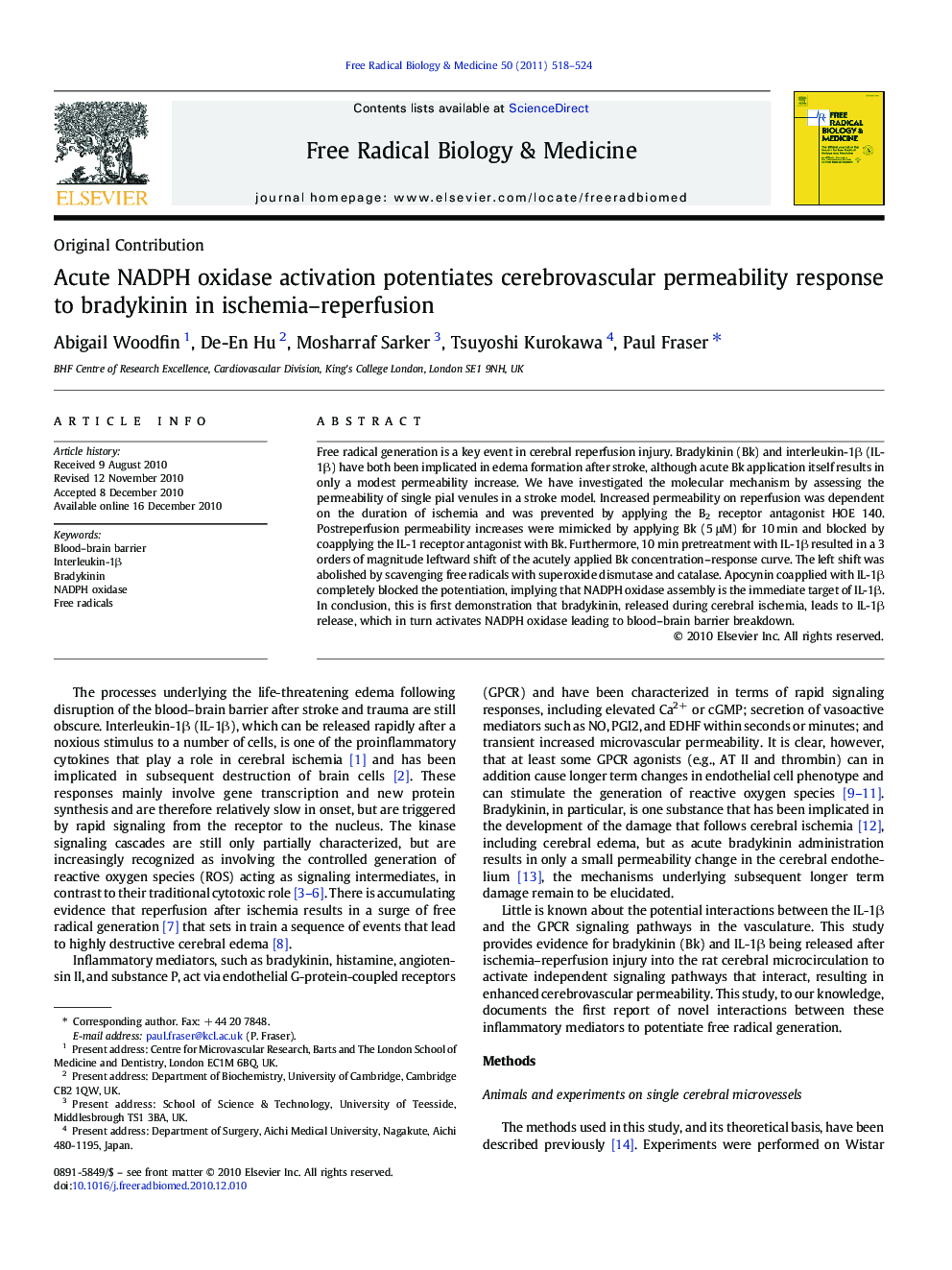| Article ID | Journal | Published Year | Pages | File Type |
|---|---|---|---|---|
| 10738628 | Free Radical Biology and Medicine | 2011 | 7 Pages |
Abstract
Free radical generation is a key event in cerebral reperfusion injury. Bradykinin (Bk) and interleukin-1β (IL-1β) have both been implicated in edema formation after stroke, although acute Bk application itself results in only a modest permeability increase. We have investigated the molecular mechanism by assessing the permeability of single pial venules in a stroke model. Increased permeability on reperfusion was dependent on the duration of ischemia and was prevented by applying the B2 receptor antagonist HOE 140. Postreperfusion permeability increases were mimicked by applying Bk (5 μM) for 10 min and blocked by coapplying the IL-1 receptor antagonist with Bk. Furthermore, 10 min pretreatment with IL-1β resulted in a 3 orders of magnitude leftward shift of the acutely applied Bk concentration-response curve. The left shift was abolished by scavenging free radicals with superoxide dismutase and catalase. Apocynin coapplied with IL-1β completely blocked the potentiation, implying that NADPH oxidase assembly is the immediate target of IL-1β. In conclusion, this is first demonstration that bradykinin, released during cerebral ischemia, leads to IL-1β release, which in turn activates NADPH oxidase leading to blood-brain barrier breakdown.
Related Topics
Life Sciences
Biochemistry, Genetics and Molecular Biology
Ageing
Authors
Abigail Woodfin, De-En Hu, Mosharraf Sarker, Tsuyoshi Kurokawa, Paul Fraser,
